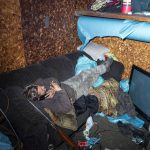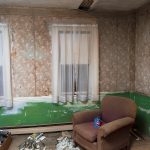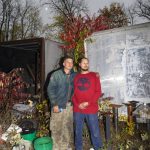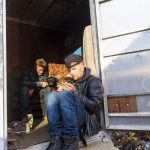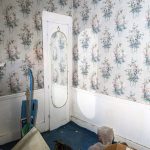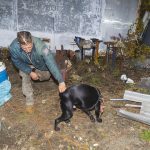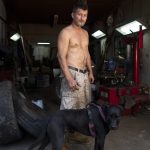I met Pete two years ago when I showed up at his garage out of the blue. He was working on a car, half naked and coated in motor oil when I introduced myself for the first time. Three men leaned against the car, chain-smoking and chattering as Pete worked. A week earlier, on my regular drive home, the property had seemingly materialized out of nowhere. It was massive and teeming with junk. I wanted permission to explore.
I think most people would describe Pete’s place as a junkyard, but that would be doing it an injustice. Pete’s garage abuts his grandfather’s now-dilapidated childhood home, forming the centerpiece in a boundless field of disorder. Rusty cars litter the property, forgotten and choked off by thick vines. Piles of scrap metal dangle from trees, and dejected shopping carts are piled high with empty cans of soft liquor. When I first arrived, I was struck by the beauty of the static landscape of junk. I soon came to see, however, that the true magnetism of the place was not one of stagnancy, but one of life and movement.
Pete’s domain includes a lawn and a lot, an underground river and tunnel system that stretches for miles; an infinite blanket of thoughtfully collected items covers it all. Antiquated car parts, conveyor belts, 1970’s elementary school desks, timeless clocks. It is a home, camouflaged by objects, a dynamic archive that spans three generations of men. Tricycles, first communion photos, family cars. It is a site of work, endless streams of people cycle through daily, and each visitor is imbued with the sense that in this land of discarded items nothing is impossible. Customers become friends, friends become family.
I did not discover all of this the day I showed up outside the garage. I did, however, develop a fast friendship with Pete, who proffered answers to questions I didn’t even know I had. We bonded over our unwillingness to see death in disused and discarded items. He made swords from old car parts, and belts from broken car seats. To Pete, and to me, the lot was clearly- and indisputably- full of items with great value and potential.
I wanted to do a project about people who challenged ideas of ownership in their reclamation of waste, and properties that confounded accepted definitions of home. When I began shooting Pete I believed that our first session would be our last. Like the other visitors, however, I was soon captivated by the movement and endless accumulation of discards so essential to the land and I soon lost count of my visits. Yet, the irony of creating still lifes in a macrocosm of perpetual motion assured the impossibility of ever representing the place in all its dimensions.
Many people see sadness in my photos. It is true that detritus is often permeated by melancholy, and detritus in large volumes can mirror internal disarray. It is also true that there are less commonly acknowledged forms of happiness and rebirth – the joy and life of things.
